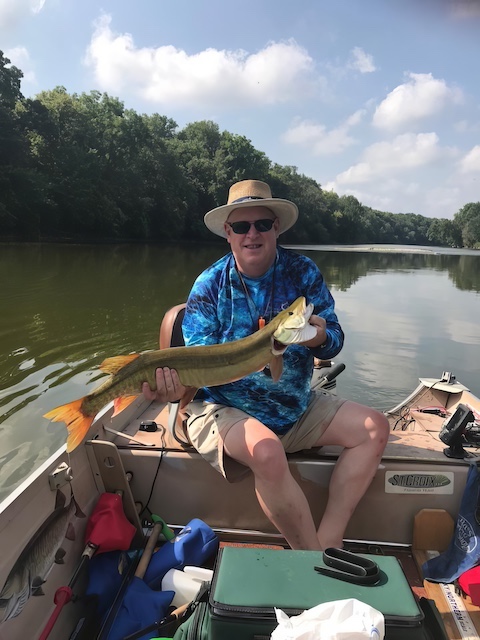I thought the opening line of Simon and Garfunkel’s “Feeling Groovy (59th Street Bridge Song)” was an appropriate title for my contribution for this month’s “Reflections on the Fox” column. It’s been my motto in birding and fishing for a long, long time but even more so now that my mobility has been limited lately by back and hip problems. I’ve always had more success utilizing a slow and deliberate approach while fishing and photographing birds rather than a scattershot, run-and-gun methodology. Now that I’m moving kind of slow out of necessity for a while, I thought I’d write a column extolling the virtues of using a slow, deliberate approach to enjoying the outdoors along
the Fox River.
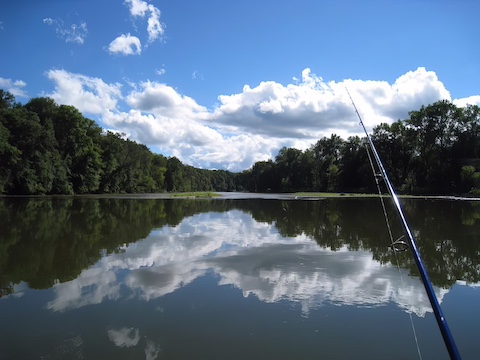
Fishing Secrets…
In the days when I did a lot of fishing from my boat in the river, some of my fishing partners would be surprised when we’d head to a spot and drop the anchor and stay for a long time, even if the fish weren’t biting there. They’d sometimes say, “Shouldn’t we move and look for another spot where the fish might be?” While that was a valid question, over the years I had found consistently productive spots that would almost always eventually produce a good catch.
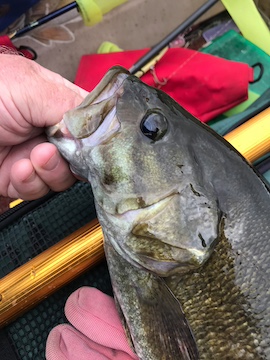
Occasionally, though, I’d relent, and we’d pull up the anchor and motor over to another spot where we tried our luck for a while, and then come back to the old, faithful spot that always historically produced fish…and we’d catch a lot of fish! It’s not the only way to do it, but it worked for me and makes some sense. If you know that the fish will be using a spot at some point during the day, but don’t know exactly when, it makes some sense to stay put so you’re there when the fish either show up or become active if they were already there. Moving for the sake of moving sometimes results in lost opportunities.
By the way, none of my best fishing spots are near a dam but are rather in free-flowing stretches of the river.
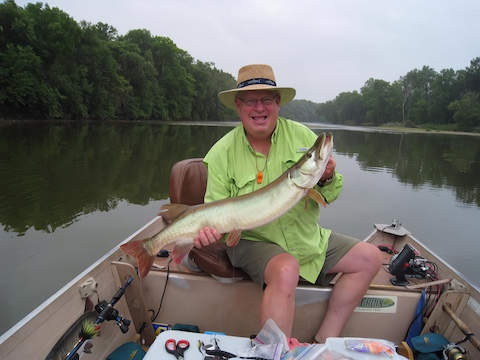
…are very similar to Birding Secrets
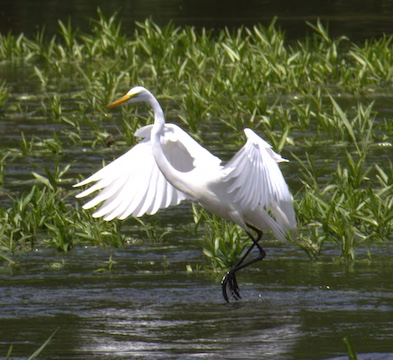
The same principle holds true for me in my birding activities. While I enjoy a good hike, and the simple act of hiking holds some very real health benefits, constantly moving through an area that holds birds is not a very effective or efficient way of seeing them.
Over my time watching birds, I’ve found some favorite “spots” similar to my fishing spots that I visit and stay at for relatively long periods of time because I know the birds will come to me there.
I guess you could call my methods “lazy person’s” fishing or birding as I exert a minimal amount of physical effort to achieve the results I’m after. There is definitely some truth in this! However, the lack of physical effort doesn’t imply the lack of preparation, mental effort, and concentration that is required to be successful in either fishing or birding.
Learning to “read” the water by observing the disturbances on the surface to understand what’s going on beneath to determine where the fish might be is a skill that takes time, experience and patience to learn. Similarly, finding a spot that is likely to be frequented by birds of various types requires studying the habits of the birds you’re looking for and the ability to identify likely habitats in practice.
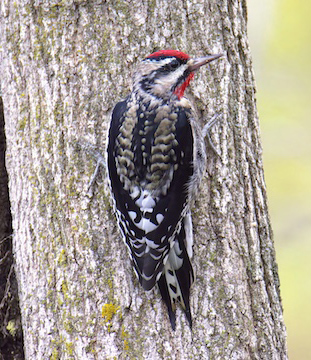
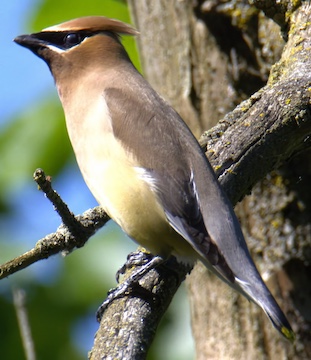
Also, while on my fishing and birding spots, I watch what’s happening on the water or in the field very closely. Close observation of what’s going on in nature requires a deliberate and thorough approach that can’t be achieved by moving quickly through an area.
A Couple of Anecdotes…
I’ll wrap this column up with a couple of anecdotes that illustrate the points I’ve tried to make above. First, I was on my spot one evening when I was fishing for muskies on the lower Fox River. I was anchored in a carefully selected position that allowed me to cast to a small area (the spot on the spot) that I knew held muskies on a very regular basis. It was early in the season, and I was using a relatively small lure and medium-heavy spinning gear: not the typical muskie tackle! Soon, a couple of other fishermen came wading down the river using large muskie lures and heavy tackle, making rapid fire random casts all over the river in search of the fish of 10,000 casts.
I continued to cast methodically to the same area and quite quickly hooked into a typical Fox River musky of about 36 inches. I brought the fish to net, unhooked him and took a quick picture before putting him back into the water. The other two fisherman called over, congratulating me on my catch and resumed their casing at an even more frenzied pace.
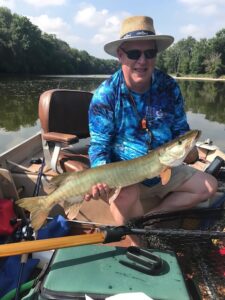
A few casts later, I hooked into my second muskie of the evening. After repeating the process of netting, unhooking, photographing, and releasing, the other two fishermen were visibly perturbed that I had caught another muskie while they still hadn’t had any luck. About twenty minutes later, with the two fishermen a little further away, I hooked and landed my third muskie of the evening. This was too much for the other two guys and they proceeded to say to each other: “That guy isn’t even using muskie gear! He’s so lucky, he doesn’t even know what he’s doing, and he’s caught three muskies in the last hour out of the Fox River!” I admit that I am pretty lucky and am certainly not God’s gift to fishing, but I thought it was ironic and quite funny that they would say that I didn’t know what I was doing when I had caught three nice fish to their zero!
My second anecdote happened one day while I was birding at my favorite spot in the Hoover Forest Preserve: the Fox River observation platform located right on the banks of the river. My friend Kathi arrived at the platform shortly after I got there, and we proceeded to have a nice conversation while we watched a raft of mallards in the water willow patch off the platform in the middle of the river.
I love it when the ducks are there, as I call them my early-warning system for reasons that will become apparent. The ducks were feeding among the water willow when they suddenly quacked loudly and flew off upstream purposefully. Kathi hadn’t noticed this, and I said to her, “An eagle must be coming.” She looked at me like I was out of my mind and said, “Why would you say that?” No sooner were those words out of her mouth than a beautiful adult Bald Eagle flew majestically upstream in front of the platform! I had a good laugh out of this as Kathi thought I was clairvoyant until I explained that I had been watching the ducks. They know when a threat is coming and will leave before the threat (in this case, an eagle) has the opportunity to harm them. Understanding what was happening was simply the result of me taking the time to watch and observe what was happening with the fauna along our beautiful Fox River.
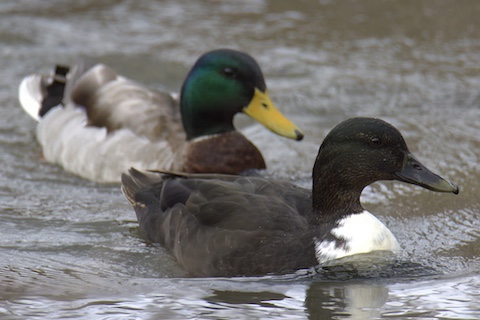
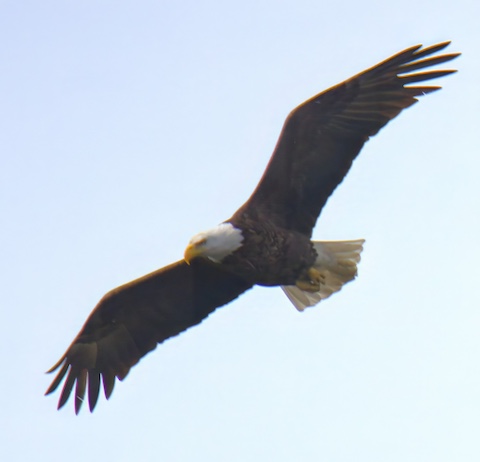
I hope that my stories convince you to take a little more time to observe the happenings along the river the next time you get a chance to get out. Summer is soon upon us, and nature is really ramping up both in and around the river. Try to get out and enjoy the bounties our river provides us but try to enjoy them slowly and deliberately. You won’t be sorry!

